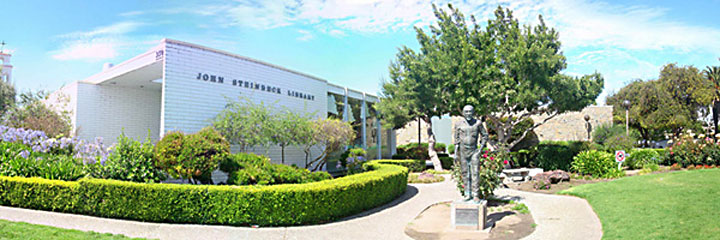 When the National Steinbeck Center presents the 34th Steinbeck Festival on May 2-4, the annual celebration will honor the 75th anniversary of The Grapes of Wrath. But as readers of John Steinbeck are aware, what went before is as important as the now in any story. This is part of the story behind the John Steinbeck festival begun in the writer’s hometown in 1980.
When the National Steinbeck Center presents the 34th Steinbeck Festival on May 2-4, the annual celebration will honor the 75th anniversary of The Grapes of Wrath. But as readers of John Steinbeck are aware, what went before is as important as the now in any story. This is part of the story behind the John Steinbeck festival begun in the writer’s hometown in 1980.
A Festival for John Steinbeck in the Writer’s Hometown
The first Steinbeck Festival was held in Salinas, California, a small city with a significant agricultural industry, in June of 1980. Labeled a literary festival by its founders—John Gross, the Salinas, California librarian, and David Aguilar, a teacher at Hartnell College—the modest event was cosponsored by the library and the college, a community college with a reputation for civic outreach. Along with artifacts from John Steinbeck’s life, there were films, lectures, panel discussions, and a stage play. Some participants got college credit for attending, but the three-day event was open to anyone. Best yet, it was free—bus tours included. People in Salinas, California came together to honor a celebrated son, and the annual Steinbeck Festival was on its way.
The first Steinbeck Festival was held in Salinas, California, a small city with a significant agricultural industry, in June of 1980.
The 1981 festival was even bigger than the first. A 13-day event featuring 23 speakers, 10 films, seven stage performances, seven bus tours, and several ambitious exhibits, its keynote speaker was the award-winning actor Burgess Meredith, John Steinbeck’s longtime friend. The educational mission and academic connection remained strong, coordinated by Hartnell College and the Salinas, California library and advised by Jackson Benson, the San Diego State University professor who was writing John Steinbeck’s official biography.
The True Adventures of John Steinbeck, Writer, Arrives
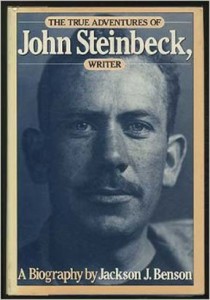 Like Hartnell College, San Diego State is a public school with community spirit, and the festival’s academic ties attracted government support. Funded by a grant from the National Endowment for the Humanities, the 1982 festival moved to the first weekend in August, with public readings from John Steinbeck’s books, a pair of well-attended panel discussions, 18 lectures, 15 film showings, and four tours. As in 1980 and 1981, the 1982 festival was free.
Like Hartnell College, San Diego State is a public school with community spirit, and the festival’s academic ties attracted government support. Funded by a grant from the National Endowment for the Humanities, the 1982 festival moved to the first weekend in August, with public readings from John Steinbeck’s books, a pair of well-attended panel discussions, 18 lectures, 15 film showings, and four tours. As in 1980 and 1981, the 1982 festival was free.
The fourth festival included the first book publication event held anywhere to launch Jackson Benson’s definitive life of John Steinbeck.
It was also a prelude to 1983, when the fourth Steinbeck Festival opened with a premiere: the first publication event held anywhere to launch Benson’s The Adventures of John Steinbeck, Writer, still the definitive life of John Steinbeck. Although college credit continued to be available and literature remained foremost, the new venue chosen for the festival—Salinas, California’s Community Center—reflected the dramatic growth in attendance and the increasing importance of local volunteers, including tour guides who received special training in advance.
From Russia to Hartnell College with Love—For Reading
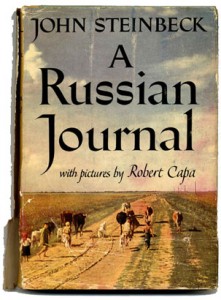 The 1984 festival went global. Although centered in Salinas, California, it was augmented by the presence of the Second International Steinbeck Congress, bringing together authorities on John Steinbeck from throughout the world. Among the 34 featured speakers were scholars from India, Japan, and Korea; other events included 10 bus tours, 16 films, and four plays. Among the funders was the California Council for the Humanities—like the National Endowment for the Arts grant, an enviable “good housekeeping seal of approval” for a community event begun and staffed by volunteers.
The 1984 festival went global. Although centered in Salinas, California, it was augmented by the presence of the Second International Steinbeck Congress, bringing together authorities on John Steinbeck from throughout the world. Among the 34 featured speakers were scholars from India, Japan, and Korea; other events included 10 bus tours, 16 films, and four plays. Among the funders was the California Council for the Humanities—like the National Endowment for the Arts grant, an enviable “good housekeeping seal of approval” for a community event begun and staffed by volunteers.
John Steinbeck’s hopes for international cooperation were coming to fruition in Salinas, California.
Until recently, the annual festival continued to occur during the first week in August, running 4-5 days and attracting a variety of Steinbeck scholars, fans, and visitors to Salinas, California. Bus tours and films remained popular. But 1989 was a really big year. The 50th anniversary of the publication of The Grapes of Wrath drew international attention and became the inevitable focus of the festival. Glasnost was in the air, and scholars from the Soviet Union even came. John Steinbeck’s hopes for international cooperation—expressed 40 years earlier in A Russian Journal—were coming to fruition in Salinas, California.
A Son and Spouse of John Steinbeck Participate in Person
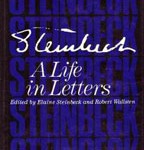 The festival’s 50th-anniverary focus on The Grapes of Wrath set the pattern for the future, and festivals in the 1990s frequently highlighted single books, including East of Eden, The Red Pony, America and Americans, and Cannery Row. The annual event continued to take place the first weekend in August so that educators from across the country—a mainstay of the audience—could attend.
The festival’s 50th-anniverary focus on The Grapes of Wrath set the pattern for the future, and festivals in the 1990s frequently highlighted single books, including East of Eden, The Red Pony, America and Americans, and Cannery Row. The annual event continued to take place the first weekend in August so that educators from across the country—a mainstay of the audience—could attend.
When offered accommodations elsewhere, the writer’s widow insisted on staying in the same Salinas, California hotel where the festival’s speakers were lodged.
However, the speakers weren’t always academicians. John Steinbeck IV, the writer’s younger son, was among the notable speakers with a personal connection. Elaine Steinbeck, John Steinbeck’s third wife, also attended one year. When offered accommodations elsewhere, the writer’s widow insisted on staying in the same Salinas, California hotel where the festival’s speakers were lodged.
National Steinbeck Center Calls Salinas, California Home
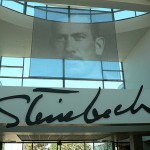 More and more volunteers were needed to make the annual event successful, and eventually it seemed that everyone got involved. If you lived in Salinas, California, then you—or someone you knew—was already pitching in when the Steinbeck Festival celebrated its 15h anniversary in 1996. Banners were hung across Main Street. The water company used their Pitney Bowles machine to promote the festival on customer-billing envelopes. Local companies donated printing and other essential services. Festival posters showed up in storefront windows all over town.
More and more volunteers were needed to make the annual event successful, and eventually it seemed that everyone got involved. If you lived in Salinas, California, then you—or someone you knew—was already pitching in when the Steinbeck Festival celebrated its 15h anniversary in 1996. Banners were hung across Main Street. The water company used their Pitney Bowles machine to promote the festival on customer-billing envelopes. Local companies donated printing and other essential services. Festival posters showed up in storefront windows all over town.
By the time the National Steinbeck Center opened in downtown Salinas, California, and took over event management in 1998, the literary festival devoted to the city’s greatest celebrity and dedicated to public education was well-established, well-attended, and well-respected.
By the time the National Steinbeck Center opened in downtown Salinas, California, and took over event management in 1998, the literary festival devoted to the city’s greatest celebrity and dedicated to public education was well-established, well-attended, and well-respected.
Pre-festival activities this year included events in Washington, D.C., and elsewhere. May 2-4 activities include bus tours to familiar places in Steinbeck’s fiction—the Hamilton Ranch near King City, the historic Spreckels site near Salinas, and Ed Ricketts’ lab in Monterey—plus a number of evening surprises.
But that’s where we began: the foreground of a story with a background in Salinas, California volunteerism, public spirit, and community pride.
